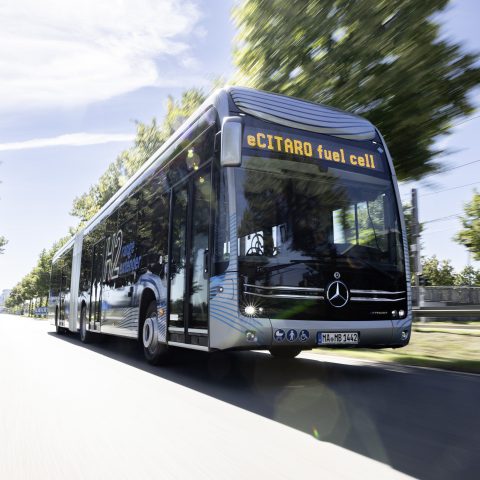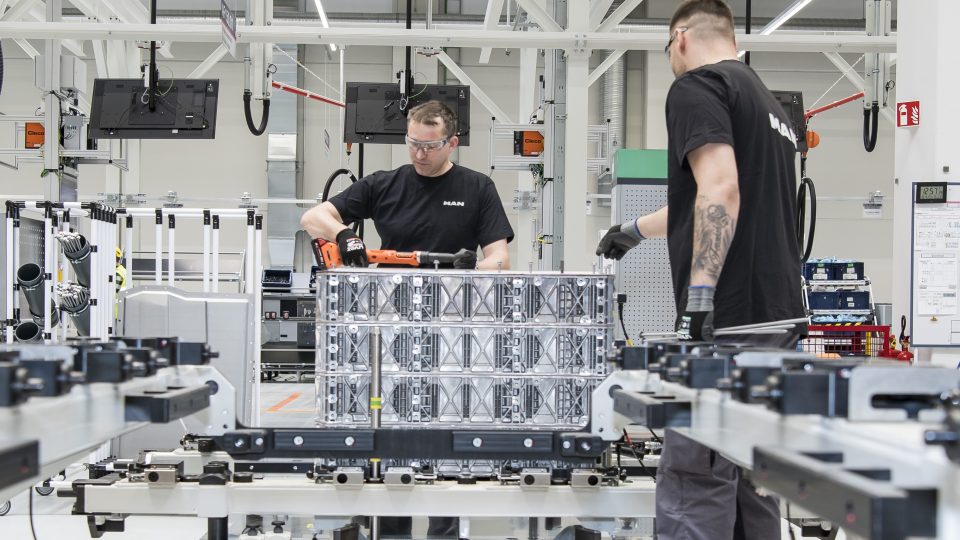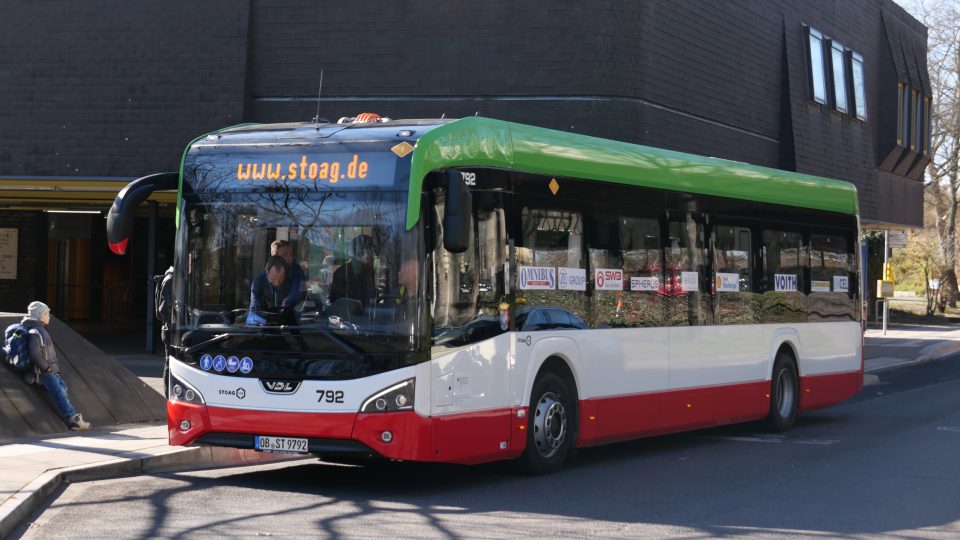The Mercedes eCitaro G fuel cell will be showcased again at Mobility Move in Berlin
Daimler Buses is going to showcase the articulated version of the eCitaro fuel cell at VDV-backed Mobility Move exhibition (former ElekBu), next week in Berlin. 1,400 participants, 90 exhibitors (vs the 78 companies exhibiting in 2022), 20 vehicles: these are the figures of Mobility Move, the first edition under new brand of VDV-backed e-bus expo until now known […]

Daimler Buses is going to showcase the articulated version of the eCitaro fuel cell at VDV-backed Mobility Move exhibition (former ElekBu), next week in Berlin.
1,400 participants, 90 exhibitors (vs the 78 companies exhibiting in 2022), 20 vehicles: these are the figures of Mobility Move, the first edition under new brand of VDV-backed e-bus expo until now known as ElekBu. It’ll be live in Berlin on 5-7 March.
At the booth in Convention Hall II of the Estrel Hotel Berlin, industry visitors can also learn about the extensive digital service offering from Omniplus On as well as the e-mobility systems from Daimler Buses Solutions. On 6th March at 2:15 p.m., Nils Richert, Head of Sales and Projects eSystems DACH for eMobility and charging infrastructure at Daimler Buses Solutions, will give a presentation on “Overall design for the transition to alternative drives”.
The r eCitaro fuel cell was launched at UITP Summit 2023 and has just been awarded in Spain.
Mercedes eCitaro G fuel cell: the ID card
The three-door electric articulated bus Mercedes eCitaro G fuel cell with a fuel cell range extender showcased in Berlin is equipped with four battery packs featuring the latest-generation lithium-ion batteries (NMC3) with a total battery capacity of 392 kWh. A three battery pack version is also available. NMC3 batteries have a very high energy content and are highly durable. Charging is done using charging sockets positioned on the right and left above the front wheel. Optionally, a charging socket at the front or rear is also possible. The maximum charging output is 150 kW.

The hydrogen supply for the 60 kW fuel cell (supplied by Toyota) is provided by six H2 cylinders (optionally seven) each with a capacity of five kilograms, which are installed on the vehicle roof of the front section. The hydrogen tanks are refuelled on the right side above the second axle in the direction of travel. Thanks to the combination of high-performance batteries and fuel cell, the eCitaro G fuel cell achieves a range of around 400 kilometres without needing to recharge, Daimler Buses states.
Two electric axles on the Mercedes eCitaro G fuel cell
Both the centre and rear axles of the articulated bus are powered. The propulsion is provided as standard by two low-floor portal axles with electric motors located close to the wheels by ZF. The electric motors deliver 141 kW per wheel and achieve a torque of 494 Nm. This results in a torque of 11,000 Nm per wheel thanks to a fixed gear ratio.

Thanks to the rooftop installations of battery modules, fuel cell, and hydrogen system, the eCitaro G fuel cell also comes as standard with a roll and pitch control system for the chassis.
The safety equipment in the electric articulated bus eCitaro G fuel cell at mobility move 2024 “also includes a variety of state-of-the-art assistance systems – Daimler Buses stresses -. In addition to the standard Electropneumatic Brake System (EBS) and Traction Control System (ASR), Sideguard Assist and Preventive Brake Assist (PBA) contribute to enhanced safety. Sideguard Assist supports the driver when turning and changing lanes by detecting pedestrians or cyclists in the blind spot next to the bus and issuing a warning the driver. Preventive Brake Assist is the world’s first active braking assistant for city buses. The exhibition bus is also equipped with an Acoustic Vehicle Alerting System (AVAS), which alerts pedestrians to the otherwise nearly silent operation of the eCitaro G fuel cell through sound. The 270° camera system also contributes to safety, allowing the driver to see the area immediately behind and beside the vehicle during manoeuvring and in tight spaces”.
In the Cockpit City, the driver takes a seat behind a compartment door with a fully glazed partition. They benefit from an air-conditioned driver’s seat with memory function and lumbar support. The cockpit offers the familiar layout found in every Citaro and eCitaro. In the instrument panel, instead of the usual rev counter, a power meter displays the energy flow of the eCitaro G fuel cell, and another indicator shows the fill level of the hydrogen tanks as a percentage.







